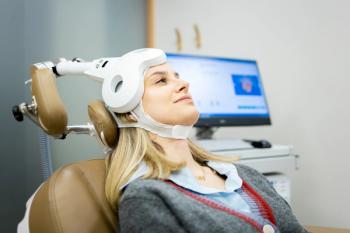
- Psychiatric Times Vol 29 No 8
- Volume 29
- Issue 8
Antidepressants: Risk vs Benefit in Depression
Two recent publications provide clinically relevant information about the risk to benefit ratio of antidepressants for the treatment of MDD in youths, adults, and the elderly.
Two recent publications provide clinically relevant information about the risk to benefit ratio of antidepressants for the treatment of MDD in youths, adults, and the elderly.
For fluoxetine, there were 12 adult studies with 2365 patients, 4 geriatric studies with 960 patients, and 4 youth studies with 708 patients. For venlafaxine IR (immediate-release), there were 11 adult studies with 2421 patients and for venlafaxine ER (extended-release) there were 10 adult studies with 2461 patients. The analysis included the first 6 weeks of treatment for MDD. The outcome measure for adult and geriatric patients was the Hamilton Depression Rating Scale (HAM-D), and the outcome measure for youths was the Children’s Depression Rating Scale-Revised (CDRS-R). Response was defined as a 50% reduction in the HAM-D score at week 6 for adult and geriatric patients and a 50% reduction in the CDRS-R score at week 6 for youths.
Overall, in adult and geriatric patients, there was a 27.7% greater improvement with antidepressants compared with placebo. Estimated response rates were 58.4% for antidepressants compared with 39.9% for placebo. The number needed to treat (NNT) was 5.41. Remission rates (HAM-D score 8 or less) were 43% for antidepressants and 29.3% for placebo, a statistically significant difference. The NNT for remission was 7.3. Baseline severity of depression did not affect the efficacy of treatment for any of the medications. The antidepressants demonstrated benefit for patients with low and high levels of severity of depression.
Compared with adults, youths had a greater difference between anti-depressant-treated and placebo-treated patients in terms of response rates and remission rates. There was 29% greater improvement for fluoxetine-treated youths compared with youths who received placebo over the course of 6 weeks. Estimated response rates were 29.8% for fluoxetine compared with 5.7% for placebo. The NNT was 4.16. Remission rates were 46.6% for fluoxetine and 16.5% for placebo, with an NNT of 3.33. Baseline severity of illness did not affect outcome. These findings support the efficacy of fluoxetine treatment for depressed youths with low- to high-level depression severity. Since the analysis for youths only included fluoxetine, it is not certain whether these findings can be generalized to other antidepressants.
The reported rate of suicide risk at baseline was highest for youths (20%) compared with adults (5%) and the elderly (3%). Although there is an FDA warning about antidepressant use and the risk of suicidality in children, adolescents, and young adults (younger than 25), no significant difference in suicide risk was seen between youths treated with fluoxetine and youths treated with placebo. For youths treated with fluoxetine, there was a 50.3% decrease in the probability of suicidal thoughts and ideation and a 61.3% decrease for controls after 8 weeks. Youths who received fluoxetine had a more rapid reduction in depressive symptoms than those who received placebo. Depression severity was associated with suicide risk for both fluoxetine-treated youths and youths who received placebo.
Adult and geriatric patients treated with antidepressants had a significantly greater reduction in suicide risk over time compared with patients who received placebo. Approximately 2 weeks after treatment initiation, the beneficial effect of medication on reduction of suicide risk was noted. There was a significantly faster reduction in depressive symptoms for patients treated with antidepressants than for patients in the placebo group. Depression severity was significantly associated with suicide risk in adult and geriatric patients. It was found that both fluoxetine and venlafaxine decreased suicidal thoughts and behavior, which were mediated by a decrease in depressive symptoms during treatment.
These 2 articles by Gibbons and colleagues1,2 provide reassurance about efficacy and safety of fluoxetine for treating depression in children and adolescents. Although there was no significant effect of treatment on suicidal thoughts and behavior in youths, fluoxetine did not increase suicide risk in this population. However, since this analysis only included fluoxetine studies in youths, it is not possible to draw conclusions about other antidepressants for treating MDD in youths. Analyses of other antidepressant studies with children and adolescents are warranted.
References:
1. Gibbons RD, Hur K, Brown CH, et al.
2. Gibbons RD, Brown CH, Hur K, et al.
Articles in this issue
over 13 years ago
Anesthesia Advances Add to Patient Comfort in ECTover 13 years ago
Antidepressants and Persistent Pulmonary Hypertension of the Newbornover 13 years ago
Initiatives in Integrative Mental Healthover 13 years ago
On the Essence of Psychotherapyover 13 years ago
Effective Personalized Strategies for Treating Bipolar Disorderover 13 years ago
After the Partyover 13 years ago
The Occupation of Psychiatry?over 13 years ago
Electronic Health Records and Patient Privacy-An Oxymoron?over 13 years ago
Introduction: Dementia, Delirium, Depression, Drugs, and DrivingNewsletter
Receive trusted psychiatric news, expert analysis, and clinical insights — subscribe today to support your practice and your patients.












